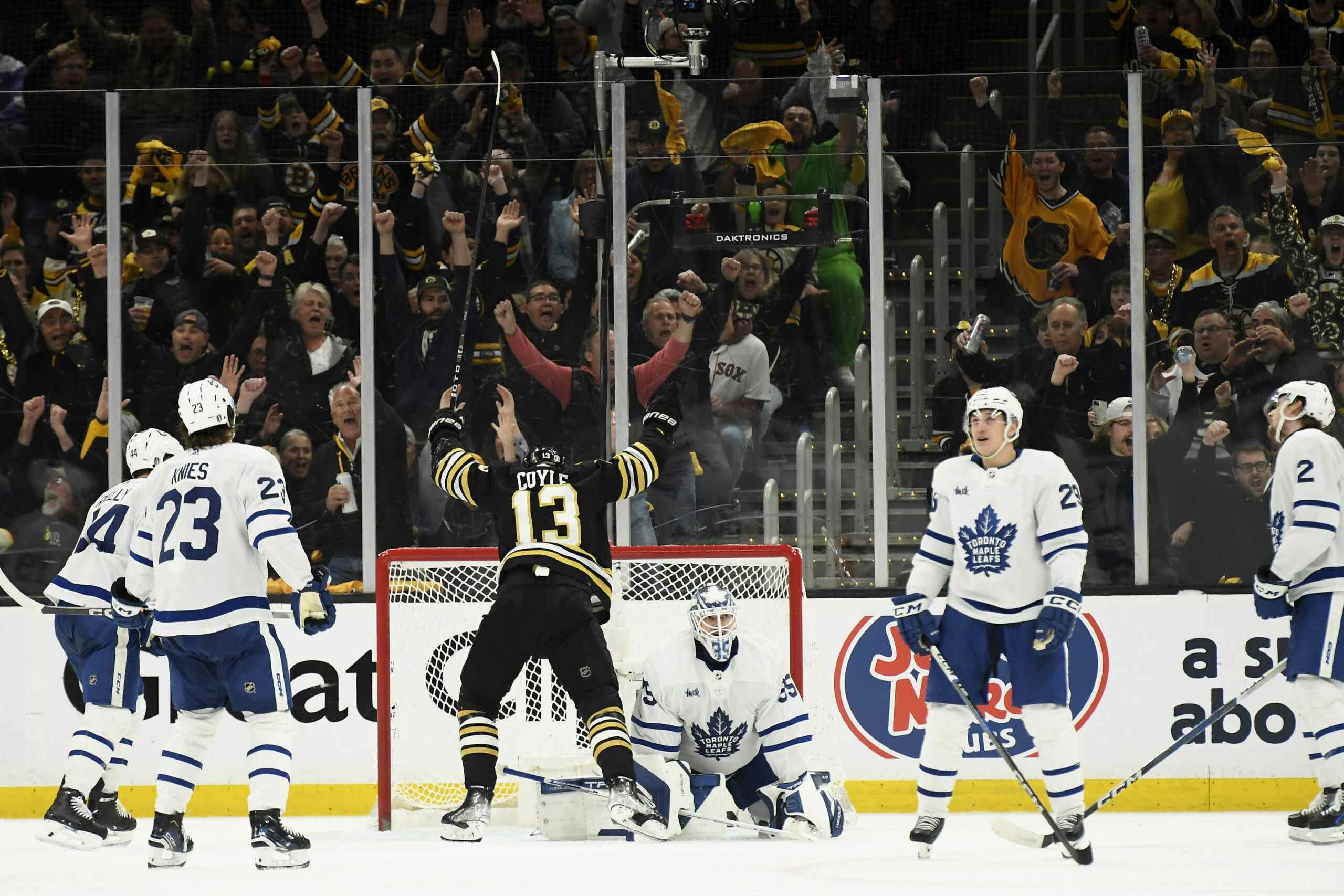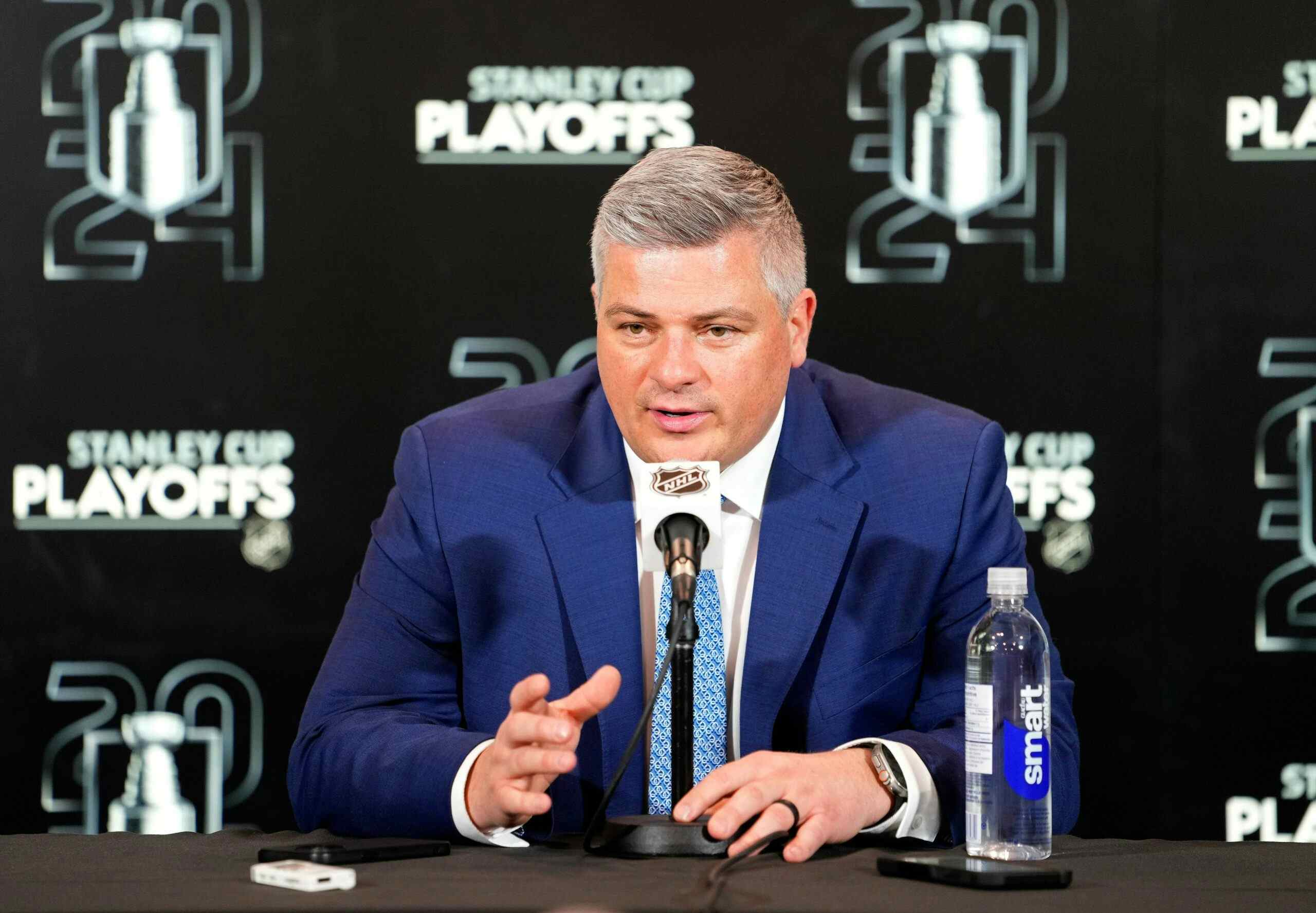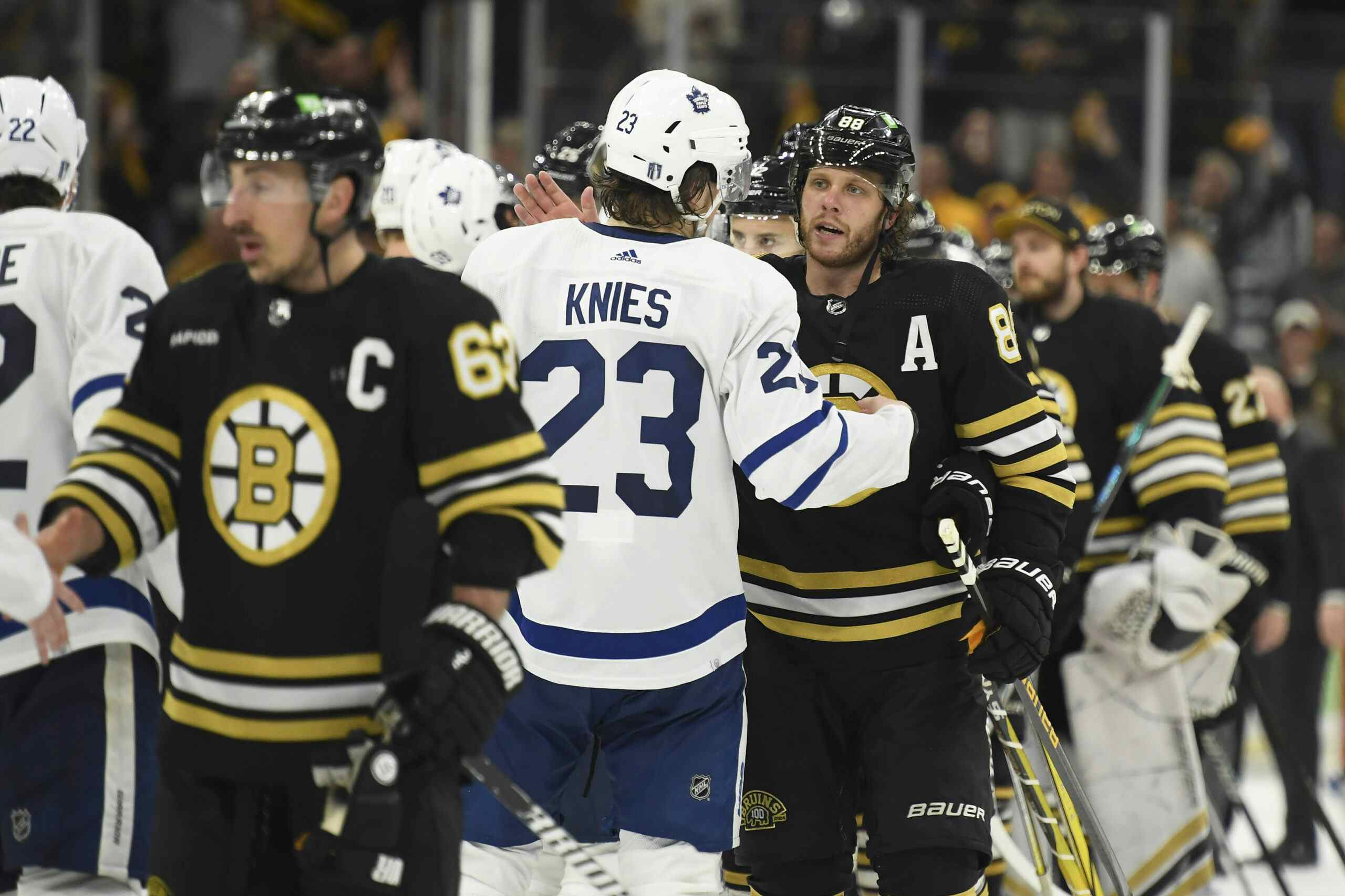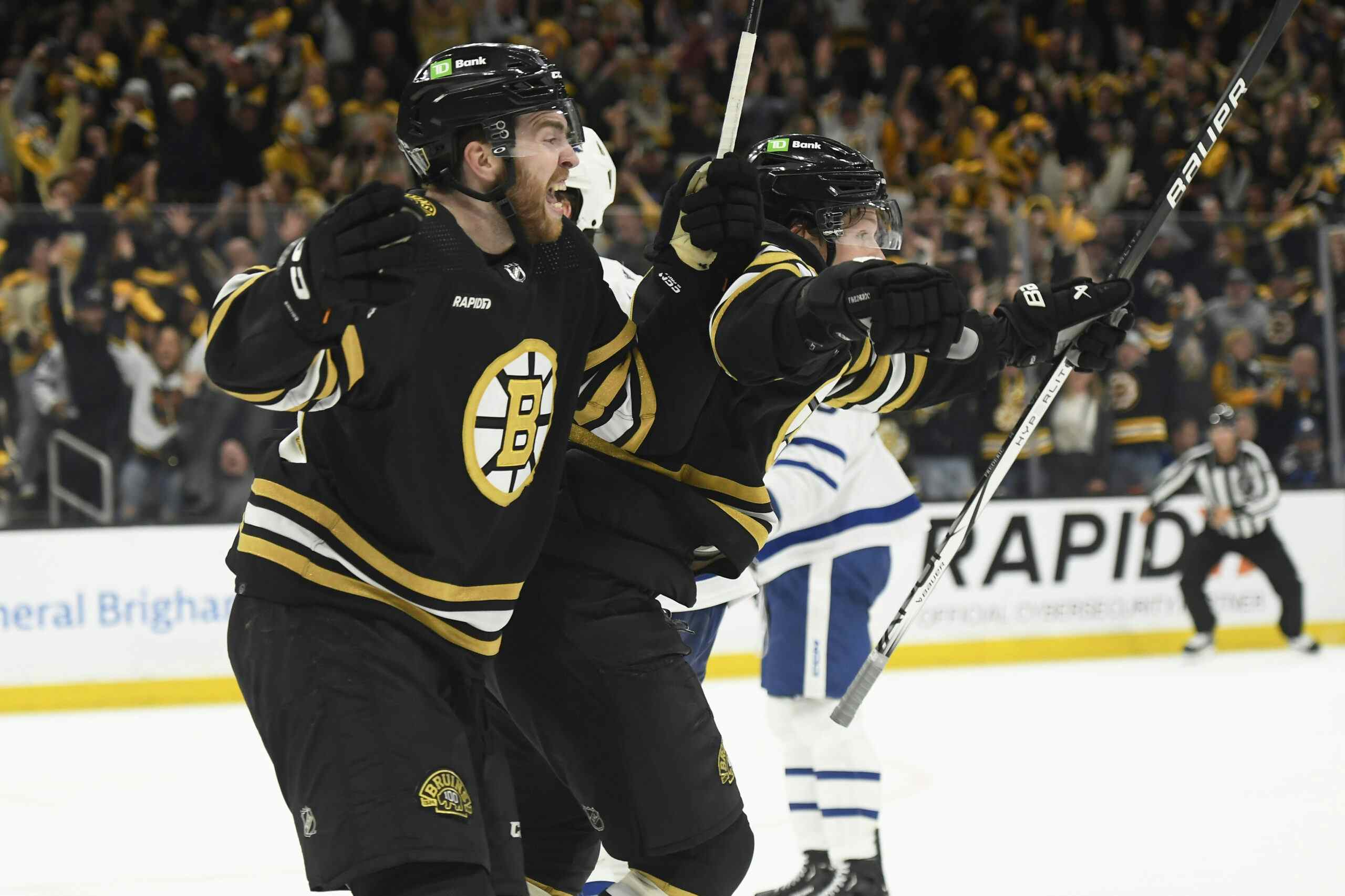Why Auston Matthews is probably already an impact forward
As far as moments of Leafs fan euphoria, I’d be hard pressed to pick a moment that was more fun to witness than the reaction we had at the TLN Draft Lottery Party on Saturday. From the “good enough for us” level of cheers when Ottawa and Montreal were shut out, to the toast to “Not The Oilers” before the big reveal”, to the absolute pandemonium when the #1 card flipped over to the brand new Leafs logo, the energy in that corner was nothing short of unforgettable.
After all, the Leafs had just all but picked up Auston Matthews, a young talent who is projected to become one of the absolute best players on the planet in just a few years. The masses are already debating what he could be, and it’s hard to blame them. But what about what he already is? Few are talking about what Matthews can jump in and immediately be for the Leafs, despite the fact that he projects to immediately be an excellent NHL player.
The Swiss League
| Player | Age | NLA-G | NLA-A | NLA-PTS | NHL-G | NHL-A | NHL-PTS |
|---|---|---|---|---|---|---|---|
| Joe Thornton | 25 | 0.25 | 1.1 | 1.35 | 0.35 | 1.18 | 1.53 |
| Dany Heatley | 23 | 0.87 | 0.62 | 1.49 | 0.6 | 0.64 | 1.24 |
| Daniel Briere | 26 | 0.47 | 0.8 | 1.27 | 0.52 | 0.68 | 1.2 |
| Patrick Kane | 24 | 0.65 | 0.5 | 1.15 | 0.48 | 0.68 | 1.16 |
| Henrik Zetterberg | 32 | 0.69 | 0.69 | 1.38 | 0.23 | 0.8 | 1.03 |
| Rick Nash | 20 | 0.61 | 0.45 | 1.06 | 0.57 | 0.42 | 0.99 |
| John Tavares | 22 | 0.6 | 0.89 | 1.49 | 0.58 | 0.39 | 0.97 |
| Jason Spezza | 29 | 0.32 | 0.75 | 1.07 | 0.3 | 0.57 | 0.87 |
| Logan Couture | 23 | 0.31 | 0.72 | 1.03 | 0.43 | 0.33 | 0.76 |
| Patrice Bergeron | 27 | 0.52 | 0.85 | 1.37 | 0.23 | 0.52 | 0.75 |
| Tyler Seguin | 20 | 0.86 | 0.51 | 1.37 | 0.33 | 0.33 | 0.66 |
| Dustin Brown | 27 | 0.5 | 0.31 | 0.81 | 0.39 | 0.23 | 0.62 |
| David Desharnais | 26 | 0.25 | 0.75 | 1 | 0.2 | 0.37 | 0.57 |
| Auston Matthews | 18 | 0.66 | 0.61 | 1.27 | TBD | TBD | TBD |
| All Players | 25 | 0.53 | 0.69 | 1.22 | 0.4 | 0.58 | 0.98 |
| First Overall Picks | 23 | 0.5 | 0.75 | 1.25 | 0.48 | 0.73 | 1.21 |
| PPG < Matthews | 25 | 0.46 | 0.57 | 1.03 | 0.39 | 0.44 | 0.83 |
The NLA doesn’t typically develop players. Most head to bigger leagues; even shining Nino “Pride of Chur” Niederreiter played just three playoff games for HC Davos as a 17-year-old before picking Portland over Switzerland as a development path. But a lot of big NHL names have found their way there during lockouts at varying ages and have tried their hand at playing in the league.
Interestingly, Matthews’ numbers as a 17-turned-18-year-old are better than many of the mentioned NHLers. Granted, they likely weren’t giving it their all in the same way as a developing teenager trying to secure a draft position, but considering the fact that many of them played as linemates on the more popular teams, allowing them to beat up on some of the lower-budget clubs, it’s impressive that Matthews would trail only Tyler Seguin and Dany Heatley in goals per game by anything more than margin of error distances. Those two were no exception to the linemate rule; 50-in-07 era Heatley played with Peak Sabres Danny Briere, and Seguin played with Patrick Kane in the precursor to his Conn Smythe season.
Speaking of precursors, most of these players made immediate impacts in the second half of their season (2013 Lockout), or the season that followed (2005 Lockout). Dustin Brown and David Desharnais are the only active notable players to head to the NLA for their vacation tour and come back at less than a 52 point pace. Even with those two weighing down the curve, players who produced at a lower clip than Matthews still averaged out to be nearly 70 point NHL scorers when they headed back while (further ahead in schedule) first overall picks who made the jump put up a 100 point pace.
In essence, it’s good to be a high profile player heading back from a trip to Zurich, or Davos, or Geneva, or any of those fun cities.
Road To The Pros
Here’s a fun game: Go through Matthews’ pre-Europe numbers and have a laugh. Putting up over two points per game in Midget is pretty nuts, but one would imagine the quality of competition in Arizona’s equivalent of AAA Midget isn’t as high as it would be in say, the GTHL. But its once he gets to his age 15 year where things get real.
In his Draft -2 year, Matthews, as a 15-turned-16-year-old, put up a point per game in his first USHL season, something that present Sabres forward Jack Eichel couldn’t Patrick Kane didn’t attempt. All three also played on the U17 National Development team. Kane topped the charts as put up 33 points in 23 games, just barely ahead of Matthews’ 33 in 24 and easily clearing Eichel’s 34 in 36. Matthews also had the highest points per game on the U18 team, equalled Kane’s performance at the U17 World Hockey Championships, and even finished 8th in scoring at the U18’s as a 16-year-old.
Fast forward a year. Matthews puts up two points per game in the USHL, nearly a goal and an assist per game, 15 points in 7 games at the U18s, and even picks up 3 points in 5 games at the full-out World Juniors. A two-point difference at the U20’s notwithstanding, these numbers trounce Eichel’s Draft -1 year and get ahead of Kane’s by a noticeable margin as well.
The draft year is where things get a little weird. All three took different routes; Matthews picked Europe, Eichel took College, and Kane took the OHL each dominated in their own way, with Kane leading all of Junior Hockey in scoring, Eichel winning the Hobey Baker Award, while Matthews was arguably the best player in a reputable men’s league in the NLA.
All three did, however, play for the US in the World Juniors. Eichel wore the C and picked up 4 points in 5 games. Kane impressed with 5 goals and 9 points in a Bronze Medal push. Matthews, on the other hand, topped them all with 7 goals and 11 points in 7 games.
Just for reference, only seven Americans have scored 7 goals in one tournament. The only two in the last decade were Johnny Gaudreau (Draft+1) and Chris Bourque (Draft+2). Mark Green was the only person other than Matthews to do the deed in his draft year, and he did so in 1978 while the tournament was in its infancy. The same goes for the 11 points; the only others to do it in their draft year were Jordan Schroeder, Phil Kessel, and Auston’s linemate Matthew Tkachuk. All three loaded up on assists and combined for just one more goal than Matthews had on his own.
I bring this all up because, due to the nature of the American development system, Eichel and Kane are the two best comparables that Matthews has in terms of jumping straight into the NHL with pedigree. Eichel scored 57 points on an awful Sabres roster as a rookie, while Kane picked up 72 in his first year while the Blackhawks were still rebuilding. If the Leafs surround Matthews with even half-decent wingers, the sky is the limit.
Equivalency Tests
My last thought, to give a little bit more of a playing field for Matthews’ season, was to reverse engineer Rob Vollman’s NHLe formula and apply his NLA numbers to other leagues. The results look something like this:
| GP | G | A | PTS | GP | G | A | PTS | |
|---|---|---|---|---|---|---|---|---|
| NLA | 36 | 24 | 22 | 46 | 50 | 33 | 30 | 63 |
| OHL | 36 | 30 | 28 | 58 | 68 | 58 | 53 | 111 |
| WHL | 36 | 36 | 33 | 69 | 72 | 72 | 66 | 139 |
| QMJHL | 36 | 37 | 34 | 72 | 68 | 71 | 65 | 137 |
| AHL | 36 | 20 | 19 | 40 | 76 | 44 | 40 | 84 |
| SHL | 36 | 16 | 15 | 31 | 52 | 23 | 21 | 45 |
| KHL | 36 | 12 | 11 | 23 | 60 | 20 | 18 | 39 |
| Liiga | 36 | 33 | 31 | 65 | 60 | 56 | 51 | 108 |
| Hockey East | 36 | 26 | 24 | 50 | 41 | 30 | 27 | 58 |
The results are far from perfect. For example, as much as I believe he’s the consensus #1, I have my doubts that Auston Matthews would have been as productive in the SM-Liiga as Patrik Laine and Jesse Puljujarvi combined (though minutes probably come into play here). As well, assists are almost as subjective in some European leagues as hits or blocked shots, and the NLA is no exception; Zug has four of the top ten playmakers, and former Oilers forward Robert Nilsson is way ahead of the pack on Matthews’ Zurich Lions. It’s possible that a finisher like Matthews is losing out on a few rebound assists that North American leagues would have been more likely to count, throwing out his odds against some North American junior players.
Nonetheless, I stacked him up against the draft year of the top forward selected in the last ten drafts. Matthews handily laps Sam Reinhart, Nathan MacKinnon, Ryan Nugent-Hopkins, and Jordan Staal in point equivalents, equals Nail Yakupov, chases Steven Stamkos, Taylor Hall, and John Tavares, and is playing catchup against Kane and McDavid. When just looking at goals, though, the game changes: Suddenly, he’s well ahead of the most of the pack, and this enemy territory shrinks to just McDavid, Tavares, Stamkos, and Kane.
Much like the prior groups, these four made immediate impacts as rookies. By year two, Stamkos, Tavares, and Kane were all elite forwards. McDavid hasn’t played his second year yet, but it’s looking like he might be the best player in the world.
Eyes and Ears
Everybody knows that Auston Matthews is poised to be an absolute superstar in the National Hockey League. His coach in Zurich, former NHL bench boss and Leafs organization member Marc Crawford, described him as having the presence of Joe Sakic, the release of Jamie Benn, and the two-way ability of Anze Kopitar. That might be pumping his tires a little bit – being in the running for the Rocket Richard and Selke at the same time would be a bit of a stretch, but Crawford has coached some Hall of Fame talent over his years and the scouts have relayed similar sentiments. He’s big, he’s strong, he’s fast, and he loves to put the puck on net. He’s everything that the Leafs have been waiting to bring back into the fold since Mats Sundin’s departure.
But let’s not forget that while prospects aren’t built in a day, some learn how to walk and talk a little earlier than others. Auston Matthews might be more than just an eventual star; he might be an impact player from day one. With players like William Nylander and Mitch Marner graduating after huge Draft +1 and +2 seasons, and a potential influx of free agents that start at Nikita Zaitsev this afternoon and could grow as big as the oft-rumoured Steven Stamkos in July, it might be time to stop thinking of the present-day roster as one that needs to be “rebuilt”, but rather a reasonably good team with sky-high upside. It’s been 31 years since the last time the Leafs picked first overall, and with a player like Matthews and some forward thinking, it could be that long until they have to consider that topic ever again.
Recent articles from Jeff Veillette





